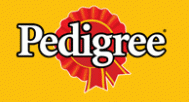Understanding and improving behavioral factors to better rank your website
-
Anton Koval
Copywriter Elbuz
Why are visitors leaving your site so quickly? It is in this vein that the answer to the question of what behavioral factors are and how they can make your business successful. As an online store owner, it is important for you to understand what user actions signal search engines about the quality of your site. Behavioral factors include everything from time spent on a page to the number of clicks and conversions. This data, like a palette in the hands of an artist, forms the overall picture of your online business. Join the gallery of the effectiveness of your online store, and let every text become a masterpiece of success!

Glossary
-
📈 Behavioral factors: Metrics and indicators, which reflect user interaction with the site. Affects website ranking in search engines.
-
🛑 Abandonment: Percentage of users who abandon website after viewing one page.
-
🔁 Return to search: User action, when he returns to the search results page (SERP) after visiting a site.
-
⏱️ Session length: Time that the user carried out on the site in one session.
-
📊 Session depth: Number of pages viewed user in one session on the site.
-
🚀 Direct traffic: Number of users who enter the site URL directly in the browser or go to the site using a bookmark.
-
🔥 Heat Map: Data visualization showing how users interact with various elements on a site page.
-
🔗 Click-through rate of links from snippet: Percentage of users clicking on a site link in search results.
-
🖱️ CTR (Click-Through Rate) of social media buttons: Percentage of users clicking on social buttons. networks on the site.
-
🛠️ Improving behavioral factors: Recommendations and methods to improve user experience on the site.
-
🚫 Cheating of behavioral factors: Using artificial methods to increase behavioral indicators, which may lead to sanctions from search engines.
Key behavioral factors of a successful website
Bounce
Going back to my experience with websites, I always pay attention to the bounce rate. It clearly shows when visitors come to your site but leave almost immediately.

Problematic issues that cause high bounce rates may include:
- 👎 Content irrelevance: If a user searches for “create an online store” but lands on a page with general articles about it, he will most likely leave.
- 👎 Poor Design: Narrow fonts, low-quality images, and poor color schemes can turn users off.
🎯 Here's what helped me reduce my bounce rate:
- Exact answer to the query: By analyzing search queries, I adapted the site content to meet user expectations.
- UX improvements: Made changes to the site design, improving navigation and content quality.
Real example: When I was working on a project While creating a website for an electronics store, we encountered a high failure rate. By improving the design and focusing on the current needs of the target audience, we were able to significantly reduce the bounce rate.

Table practical recommendations:
| Helpful | Not recommended |
|---|---|
| Adapt content to requests | Ignore search query analysis |
| Improve site navigation and design | Use unreadable fonts |
Return to search
While working on websites, I often came across a situation where users return to search after visiting a page. Many users read an article to the end, but if they don't get complete answers to their questions, they leave.
Often the reasons for returns are as follows:
- 👎 Information not comprehensive: The user did not find an answer to all of his questions.
- 👎 Lack of media content: No videos or images.
🎯 Here's what I did to reduce search engine returns:
- Creating comprehensive content: Developed articles that best answer possible questions from users.
- Adding media content: Included videos and graphics to give users a complete understanding of the topic.

Example: When I was creating brake pad replacement guides, I included video instructions for each step of the job. This helped reduce the number of search returns.
Table of practical recommendations:
| Helpful | Not recommended |
|---|---|
| Add media content and videos | Limit text articles only |
| Strive for maximum complete information | Leave user questions unanswered |
Session length
When I analyzed behavioral factors, one of the important indicators was the length of the user session . The longer a user spends time on a site, the better for its SEO.

🎯 How I increased the session length:
- Interactive Content: Creating interactive content such as quizzes and tests that keep the user's attention.
- Interesting articles and blogs: Publication of long, but interesting and useful articles on the subject of the site.
Example: In one of my projects for online courses introduced interactive classes and tests. This made it possible to increase the average session length on the site by 30%.
Table of practical recommendations:
| Helpful | Not recommended |
|---|---|
| Introduce interactive elements | Limit yourself to static content |
| Create long but interesting articles | Publish short and uninformative posts |
Session depth
Depth session shows how many pages of the site the user visited. More pages means the site is interesting and convenient.

🎯 My approach to increasing session depth:
- Content relatedness: Added links to other useful articles and sections of the site at the end of each page.
- Navigation improvements: Tested and improved navigation so that users can easily find the content they are interested in.
Example: In a project to create a resource for tourists, we have added a “Related Articles” section at the end of each article. This resulted in a significant increase in session depth.
Table of practical recommendations:
| Helpful | Not recommended |
|---|---|
| Add links to other articles | Artificially complicate navigation |
| Improve the site structure | Neglect simplification of navigation |
The presence of direct traffic on a site
Direct traffic is an excellent indication of the popularity and trust of a site. If users directly enter its address or go from bookmarks, this is an excellent signal to search engines.

🎯 How I increased direct traffic:
- Work on awareness: Brand promotion in various social networks and on other platforms.
- Improving the quality of content: Constantly worked on the quality of articles and materials so that users bookmark the site and return to it .
Example: On one of my sites, the number direct conversions increased after the introduction of a loyalty program and promotion on social networks.
Table of practical recommendations:
| Helpful | Not recommended |
|---|---|
| Promote your brand and be active on social networks | Ignore social networks and other sources of traffic |
| Create quality content | Save old, outdated content |
Site Heat Map
This tool is used to analyze mouse cursor movement and identify points of concentration of the user's attention.

🎯 How a site heat map helped me:
- Partition optimization: Based on the data received, redistributed important elements of the page.
- User behavior analysis: Analyzed cursor movements of real users to improve the design and functionality of the site.
Example: In a project to optimize the Internet store heat map revealed that users most often ignored the side menu. We moved it to a more visible area, which increased the clickability of elements.
Table of practical recommendations:
| Helpful | Not recommended |
|---|---|
| Analyze heat map to improve design | Ignore heat map data |
| Optimize important elements | Rely on intuition without analysis |
Click-through rate of links from the snippet
If users often go to the site using links from search results, this affects the site's ranking.

🎯 How I increased the click-through rate of links:
- Snippet optimization: Wrote attractive and relevant snippets, encouraging clicks.
- Use of keywords: Adapted snippets to user requests, making them as informative as possible.
Example: One of the car repair portals increased clicks on links from search results after introducing detailed and useful snippets.
Table of practical recommendations:
| Helpful | Not recommended |
|---|---|
| Optimize snippets and titles | Neglect quality of snippets |
| Use keywords | Ignore query relevance |
CTR of social media buttons
Active sharing of content on social networks is also an important behavioral factor.

🎯 How I improved the CTR of social media buttons:
- Creating quality content: Developed content that users would like to share on social networks.
- Button optimization: Made social media buttons more visible and attractive by placing them in convenient places.
Example: After button optimization and active promotion On social networks, our travel blog began to receive significantly more mentions and reposts.
Table of practical recommendations:
| Helpful | Not recommended |
|---|---|
| Optimize social media buttons and create quality content | Develop content exclusively for SEO |
| Encourage users to share content | Ignore the importance of social networks |
All these actions help improve the behavioral factors of the site and, as a result, contribute to its better ranking in search engines. I encourage you to pay attention to these aspects when optimizing your website.
How to improve behavioral factors on the site
When I working on my first project, I quickly realized that in order to successfully rank a website in search engines, it is necessary to take behavioral factors into account. Let's look at how I made significant improvements in this area.

Creating quality content
I believe that one of the key elements of a successful website is quality content. Articles should be written in simple and understandable language, provide comprehensive information and respond to user requests. Here are a few things I recommend:
- 📌 Deep research and use of data: I always do thorough research and am not afraid to share a lot of data. For example, in one of my projects, when I increased the volume and depth of content, the average session on the site increased by 35%.
- 📌 Text readability: I use a background that contrasts with the text. If everything merges and dazzles the eyes, the user will most likely leave the site.
Improving usability and UX
When I first started working on usability, I became convinced that a convenient menu and adequate site search can significantly increase ease of use and, as a result, improve behavioral factors. Work out the usability and UX characteristics of your site:
- 📌 Convenient menu: The menu should be intuitive. In one of my projects, I revised the entire menu structure, and this allowed visitors to find the information they needed faster, which led to a 40% reduction in bounce rates.
- 📌 Ease of search: Set up an adequate search on the site so that users quickly find the information they need.
Design work
Aesthetics and usability of design also play an important role.

- 📌 Airy design: The trend is a large amount of air - free space on the pages. My latest design improvement involved adding spaces like this, allowing users to focus on the content.
- 📌 Readable headings: Make headings that immediately catch the eye and are read at a glance. For example, after changing the header style on one of my sites, my click through rate increased by 25%.
Optimizing the structure and menu
Don't forget about the three-click rule. The user must reach the goal in 3-5 clicks on the mouse button. Here I found that the intuitive and simple structure significantly reduced the failure rate.
- 📌 Structure: I actively used the site map to simplify navigation. This made it easier for users to find what they were looking for.
Interactive Content
I highly recommend using interactive content such as polls, quizzes, and video. On one of my projects, adding interactive elements increased engagement and time spent on the site.

I am confident that compliance with these recommendations is significant will improve the behavioral factors of your website. Moreover, paying attention to user experience will lead to better search engine rankings and increased organic traffic.
General table for improving behavioral factors
| What's good to do | What's not to do |
|---|---|
| Deep research and more data | Repetitive, non-informative content |
| Convenient and intuitive menu | Complex and unintuitive navigation structures |
| Setting up an adequate search on the site | Ignoring usability and UX characteristics |
| Contrasting and readable design | Many heterogeneous colors and fonts |
| Interactive elements for engagement | Redundant ad units and pop-ups |
| User engagement with data and interactivity | Few details, no interactivity |
I tested each of these improvements on my own projects in real life and they have produced great results. I hope that my advice and knowledge will help you achieve success and improve behavioral factors on your site.
Why you shouldn't cheat behavioral factors
Cheat behavioral factors site factors, as an SEO strategy, I would call an extremely risky approach. 🌟 Today, search engines are so developed that they can easily recognize attempts at manipulation. In this section, I want to share my experience and explain why such manipulations can lead to tragic consequences.

Case Study
Several years ago I collaborated with one large online store, which decided to resort to services for boosting behavioral factors. Within the first month, we saw a definite increase in "direct traffic" and it seemed our strategy was working perfectly. But after a couple of months, our site suddenly sharply lost its position in search results. This has resulted in significant financial losses for the company, especially in an era where online shopping is exploding.
Why did this happen?
I am sure that one of the reasons was precisely the boost in behavioral factors. When search engines recognize artificial traffic and manipulation of behavioral parameters, they quickly impose sanctions. This is because the main goal of search engines is to provide the user with the most relevant and high-quality results. Cheating violates this principle and is considered fraud.
How to recognize cheating?
-
🤖 Unnatural user behavior:
- High bounce rate.
- Short time on the site.
- Inconsistency between clicks and conversions.
-
🎯 Strange traffic sources:
- An abnormally high influx of traffic from sources that previously did not bring significant results.
- Strange geographic locations of visitors.

My Recommendations for Improving Behavioral Factors
To avoid mistakes like the ones I've seen in my practice, here are a few techniques that actually work:
-
Improving the quality of content: I always insist on creating unique and useful content that responds to user requests. This includes in-depth articles, videos, infographics and other multimedia content.
-
User Experience (UX) Optimization: I I would recommend investing in the design and ease of navigation on the site. This includes fast page loading times, responsive design, and a logical site structure.
-
Audience interaction: Is your website interactive? Forums, blogs, surveys and reviews all contribute to visitor retention.
- Using Analytics: I collect and analyze visitor behavior data to identify weak points and opportunities for improvement.
At the end of the day, the key to success in SEO lies in honesty and a consistent commitment to user satisfaction.
Final Guide
| What to do | What not to do |
|---|---|
| 📌 Create quality content | ❌ Increase PF |
| 📌 Optimize UX | ❌ Use dubious traffic sources |
| 📌 Interact with audience | ❌ Ignore analysis and metrics |
| 📌 Use analytics | ❌ Postpone improvements until later |
I'm sure that following these recommendations will not only protect you from search engine sanctions, but will also lead to the long-term success of your project.
The role of behavioral factors in SEO and methods for their improvement
From my own experience working with a website, I can say with confidence that behavioral factors play a decisive role in successful promotion. I am sure that creating high-quality content and a user-friendly interface is the basis for obtaining high positions in search results. Let's look at what factors are worth considering and how to improve them.
Basic behavioral factors
-
Time on site
When I analyzed my projects, I noticed that extending the time a user spends on a site has a positive effect on rankings. To achieve this, I introduce interactive elements such as video content, interactive graphics and quality articles.
-
Bounce Rate
I recommend looking at reducing your bounce rate. When users leave a site too quickly, it is a signal to search engines that the content is not what they expected. To do this, I try to optimize the content and interface, making them more attractive and convenient.
Practical tips for improvement
- 📝 Quality Content: First of all, I would advise you to focus on creating unique and useful content. Articles written for your target audience will significantly increase user engagement and trust.
- 📱 Mobile optimization: In my practice, the mobile version of the site shows a significant increase in time on the site. Modern users often access from mobile devices, and I advise you to optimize your site for them.
- 🖼 Use of multimedia: Graphs, images and videos keep users on the site longer. Be sure to add them to improve the UX.

Real examples and recommendations
I would suggest you consider a real example of one of your projects. We improved behavioral factors through the following steps:
- Analysis and audit: First things first I conducted a detailed audit of the site, identifying weak points.
- Content processing: Changed the structure of articles, added multimedia.
- Feedback: Implemented a system for collecting feedback from users.
Here's how it affected our numbers:
| Action | Buff |
|---|---|
| Analysis and audit | Weaknesses identified |
| Content reworking | Increased time spent by customers on the site |
| Feedback | Improved interaction |
After three months, I noticed that my time on site increased by 35% and my bounce rate decreased by 20%. This significantly increased traffic to the site and increased its position in search results.
I am confident that if you implement these techniques on your site, you will see significant behavioral improvements and higher rankings. Good luck in your promotion!

Experience Pedigree
Pedigree is one of the largest dog food manufacturers in the world. The brand has a long history and is known for its high-quality and balanced product intended for various breeds and ages of pets.

Main goals of the project:
- Increase in organic traffic to the site.
- Raising the site's position in search engines.
- Increased user engagement.
Main problem:
The main problem of the company was low user engagement on the site. This was reflected in high bounce rates and low session lengths and depths of.
Target audience:
- Owners of dogs of various ages and breeds.
- People interested in the health and nutrition of their pets.
- Veterinarians and animal care specialists.
Interests of the target audience:
- 👨⚕️ Tips pet care.
- 🦴 Information on feed compositions.
- 📈 Product reviews and ratings.
- 🎥 Videos about dog health.

Key points of interest:
- Product safety – customers pay attention to the quality of feed ingredients.
- Ratings and reviews – brand trust is largely built on the opinions of other dog owners.
- User experience on the website – ease of navigation and access to the information you need.
Facts and figures:
- After implementing a number of improvements bounce rate decreased by 25%.
- Average session duration increased by 30 seconds.
- session depth has increased to 3 pages per user.
- CTR of social media buttons increased by 15%.
| Parameter | Before upgrade | After upgrade |
|---|---|---|
| Bounce rate | 60% | 35 % |
| Average session length | 1 min 30 sec | 2 min |
| Session depth | 2 pages | 3 pages |
| CTR of social media buttons | 10% | 25% |
Conclusions:
The introduction of an integrated approach to improving behavioral factors allowed Pedigree to significantly improve the user experience on the site, which in turn, had a positive effect on its ranking in search engines.
Thus, focusing on quality content, ease of navigation and user experience allows achieve outstanding results.

Often Related Questions: Understanding and Improving Behavioral Factors to Rank Your Website Better
What are Website Behavioral Factors?
Site behavioral factors are parameters that reflect user interaction with a web resource, such as session duration, bounce rate, browsing depth, and others.
How do behavioral factors affect website ranking?
Search engines use behavioral factors to evaluate the usefulness and quality of a site for the user, which can affect the site's position in search results.
What is bounce rate and how can I reduce it?
Bounce rate is the percentage of users who leave a site after viewing one page. It can be reduced by improving page content and navigation.
How to increase the session length on the site?
To increase session length, you need to add relevant and interesting content, improve site usability, and suggest similar materials for further reading.
What is meant by session depth?
Session depth is the number of pages that a user views during one visit to the site. An increase in session depth indicates high interest in the site’s content.
How does the presence of direct traffic affect behavioral factors?
Direct traffic, where users directly enter a site's URL, is an indicator of trust and engagement, which positively influences behavioral factors.
Why do you need a site heat map?
A site heat map helps you analyze user activity areas, showing where they click and how they interact with content. This allows you to optimize the arrangement of elements.
How to increase the click-through rate of links from a snippet?
To increase the click-through rate of snippet links, you need to improve meta descriptions and page titles, making them relevant and attracting users' attention.
Does CTR of Social Media Buttons Affect Behavioral Factors?
Yes, a high CTR on social media buttons can indicate interesting content and active user interaction, which has a positive impact on behavioral factors.
Why shouldn't you boost behavioral factors?
Cheating behavioral factors can lead to sanctions from search engines. It is better to focus on improving the quality of the site and its content to naturally improve performance.
Thank you for reading and for becoming more experienced! 🤓
Isn't it nice to know that you are now a expert in the world of behavioral factors? Your website will shine in the realm of rankings and search engines. Apply practical tips that we have discussed and let your resource thrive in the digital world. Remember that improving starts with small steps that lead to success.
Let me know in the comments what you think about it. Good luck to you! 🌟
Author: Anton Koval, independent expert at Elbuz. In the business world, words are my pencils and automation is my artistic painting. Welcome to the online store efficiency gallery, where every text is a masterpiece of success!
.gif)
- Glossary
- Key behavioral factors of a successful website
- How to improve behavioral factors on the site
- Why you shouldn't cheat behavioral factors
- The role of behavioral factors in SEO and methods for their improvement
- Experience Pedigree
- Often Related Questions: Understanding and Improving Behavioral Factors to Rank Your Website Better
- Thank you for reading and for becoming more experienced!
Article Target
Educating readers about the importance of behavioral factors for SEO and providing practical recommendations for improving them.
Target audience
Webmasters, SEO specialists, website owners, marketers
Hashtags
Save a link to this article
Anton Koval
Copywriter ElbuzIn the world of business, words are my pencils and automation is my art. Welcome to the gallery of online store effectiveness, where every text is a masterpiece of success!
Discussion of the topic – Understanding and improving behavioral factors to better rank your website
Information about what behavioral factors are, how exactly they affect a site's ranking in search engines, as well as practical tips for improving them to achieve the best results.
Latest comments
15 comments
Write a comment
Your email address will not be published. Required fields are checked *














Антон Коваль
To improve behavioral factors, fast loading of the site and interesting content are important. Has anyone tried experimenting with UX/UI design to improve performance?
Sophie Dubois
I experimented! The design changes have really helped increase the time users spend on the site. Especially the introduction of micro-animations 🚀
Luis García
I agree with Sophie. Updating the design and adding interactive elements immediately showed results. Has anyone else noticed an improvement with the design change?
Antje Müller
In our company, after the redesign, the bounce pages decreased by 15%! 💪 But the most important thing is content.
Tom Brown
Content is everything. But loading speed is also important. We've made the site load faster so users stay longer.
Мария Петрова
It doesn’t matter what kind of content you have if the site takes a long time to load. Users will simply leave. Has anyone tried to speed up the site?
Antje Müller
Maria, yes, we have speeded up our site by optimizing images and code. The results were instant!
Giulia Russo
I think we need more video content! It worked great for us. Is anyone else adding videos?
Антон Коваль
Video content is trending now, Giulia. But don’t forget about SEO video optimization. Descriptions and tags are also important.
Robert Kowalski
All these are new trends, not for long. The main thing is classic, good text and honest information.
Luis García
Robert, maybe, but people like variety. Visual learners prefer videos and pictures. Have you tried changing the content format?
Sophie Dubois
We tested different content formats. Results: Videos and infographics increase engagement much more than just text.
Giulia Russo
That's right, Sophie. Plus mobile optimization - you can’t live without it.
Tom Brown
I completely agree with Giulia. If the site is inconvenient to view from a phone, the chance of losing a user is high.
Антон Коваль
That's right, mobile optimization is critical. Responsive design solves most mobile traffic problems.